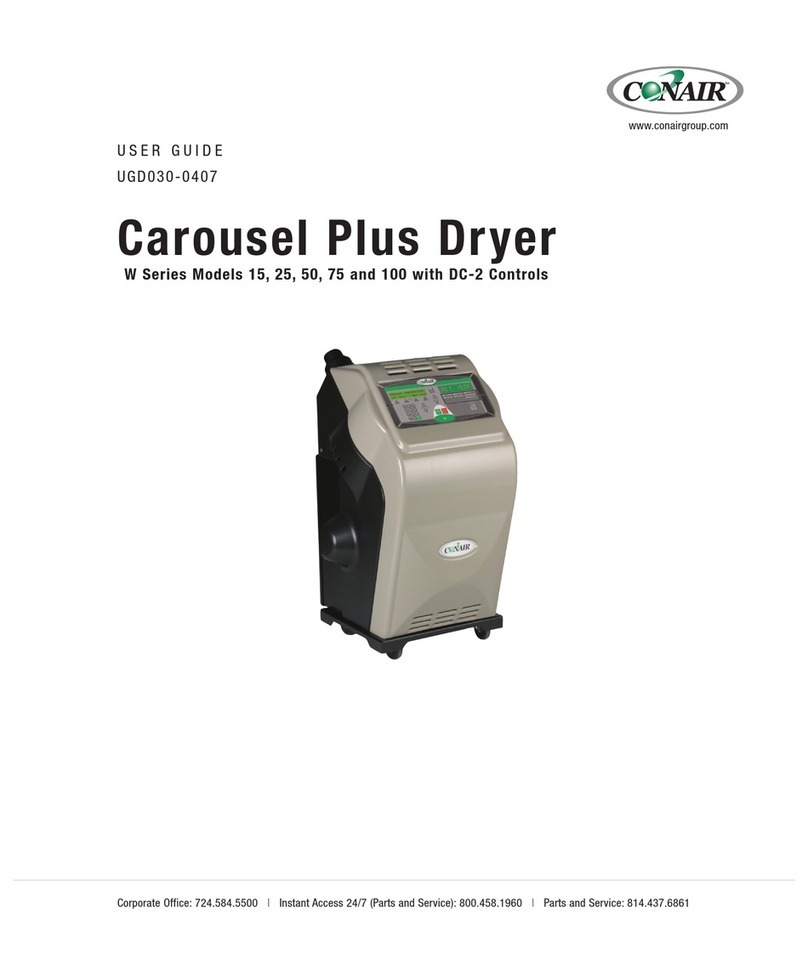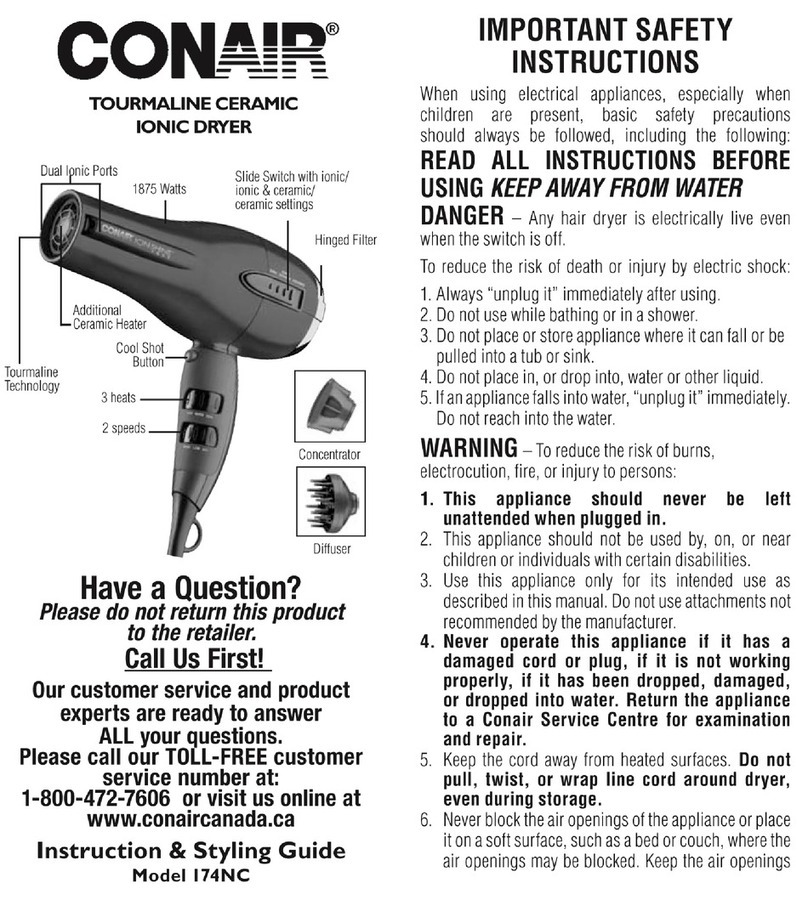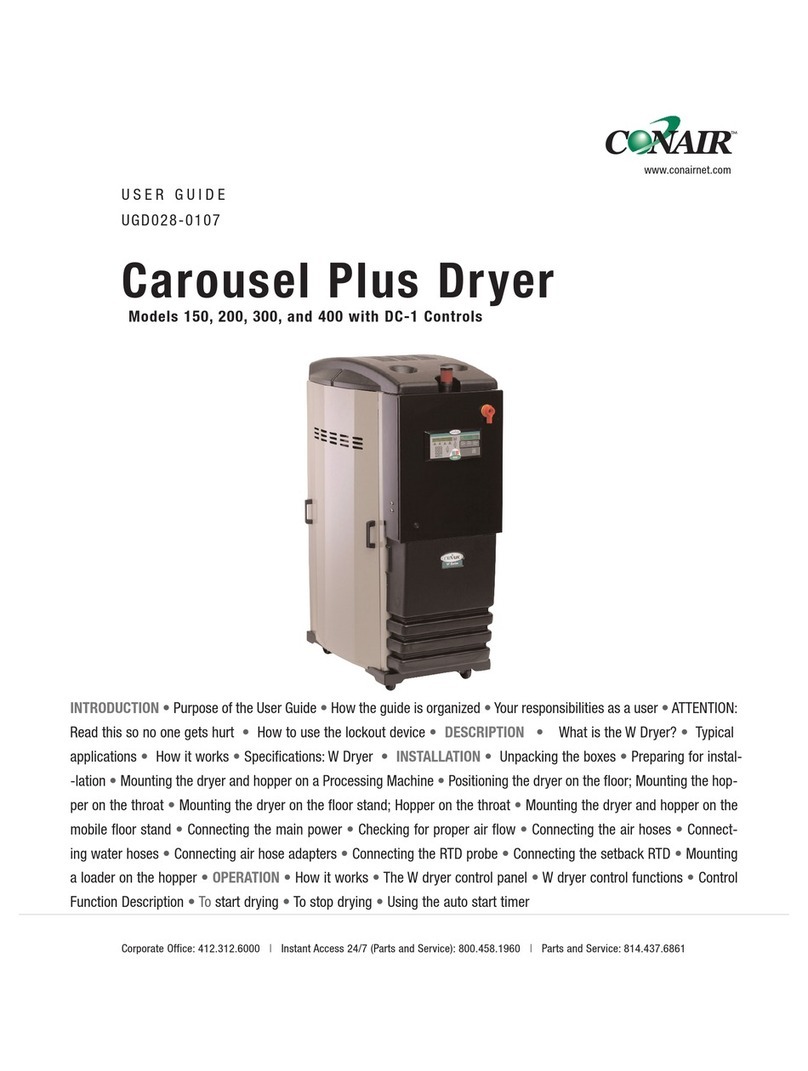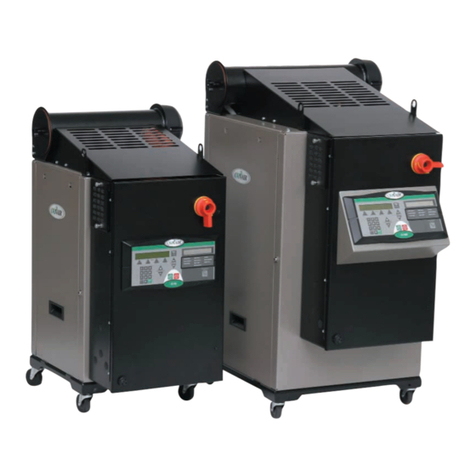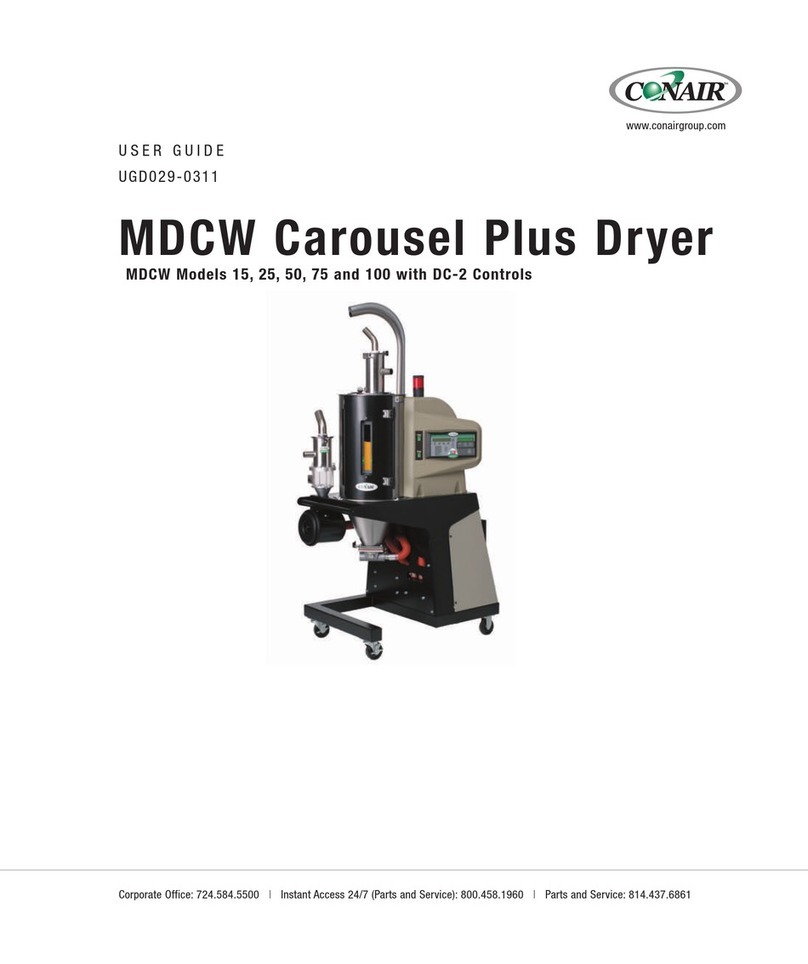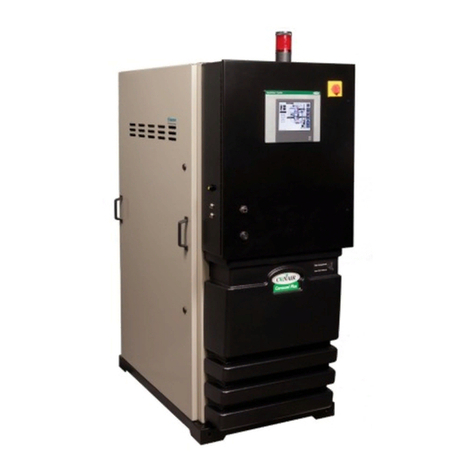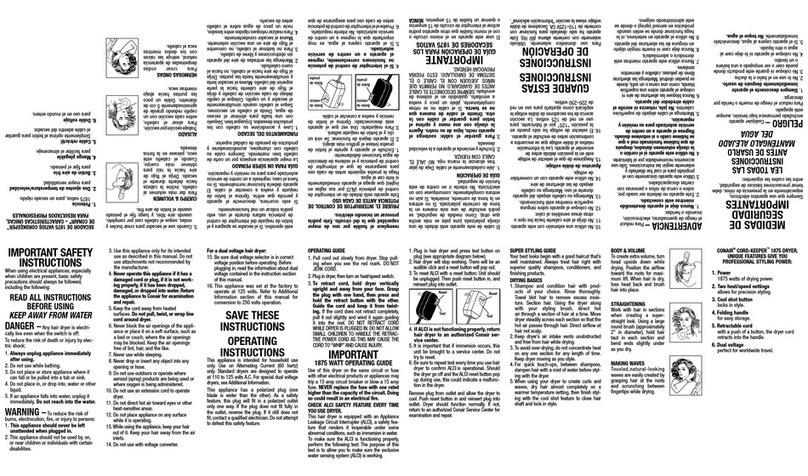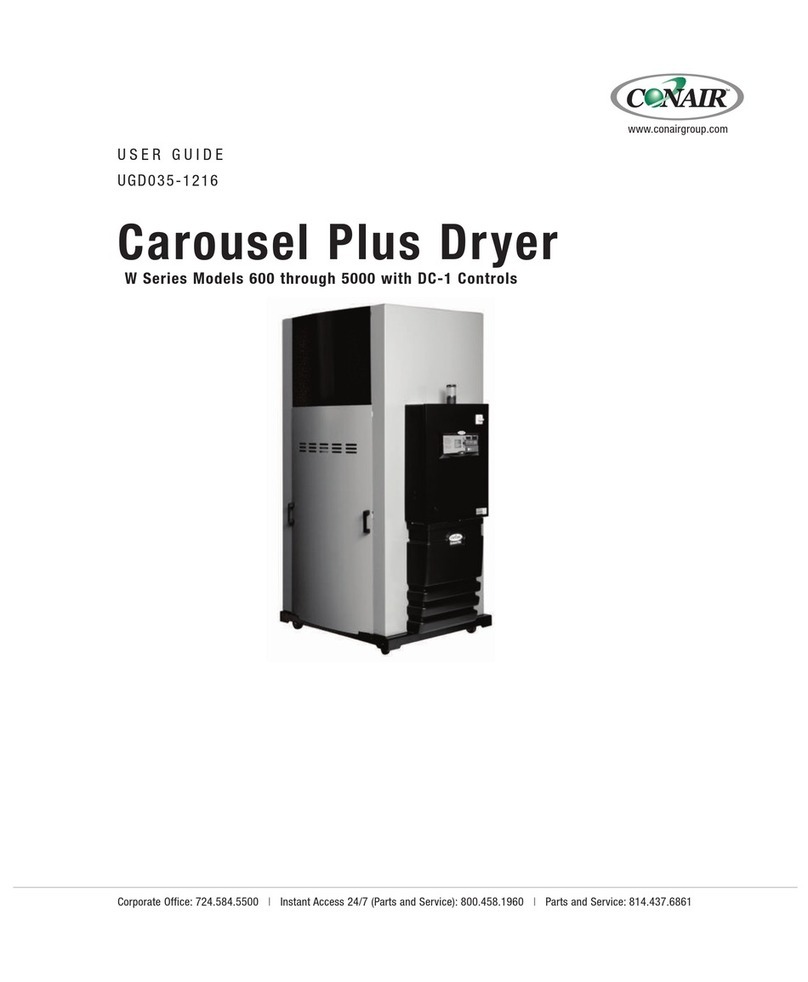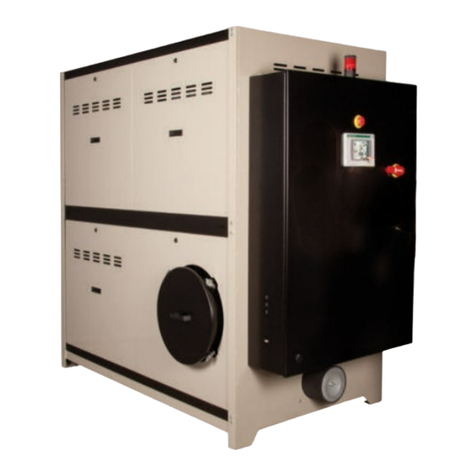Connecting the aftercooler . . . . . . . . . . . . . . . . . . . . . . . . . . . . . . 3-13
Mounting a loader on the hopper . . . . . . . . . . . . . . . . . . . . . . . . . 3-14
Testing the installation . . . . . . . . . . . . . . . . . . . . . . . . . . . . . . . . . 3-14
Using communications (Optional) . . . . . . . . . . . . . . . . . . . . . . . . . 3-16
4-1 Operation
The W Series Dryer: control panel DC-2 . . . . . . . . . . . . . . . . . . . . . 4-2
W Series Dryer control functions . . . . . . . . . . . . . . . . . . . . . . . . . . . 4-3
Control function flow charts . . . . . . . . . . . . . . . . . . . . . . . . . . . . . . 4-3
How to navigate the menu tree . . . . . . . . . . . . . . . . . . . . . . . . . . . . 4-3
Control function descriptions. . . . . . . . . . . . . . . . . . . . . . . . . . . . . 4-11
To start drying. . . . . . . . . . . . . . . . . . . . . . . . . . . . . . . . . . . . . . . . 4-37
To stop drying . . . . . . . . . . . . . . . . . . . . . . . . . . . . . . . . . . . . . . . . 4-38
How to use the supervisor’s password . . . . . . . . . . . . . . . . . . . . . 4-39
Using the auto start timer . . . . . . . . . . . . . . . . . . . . . . . . . . . . . . . 4-41
Setting high setpoint limit . . . . . . . . . . . . . . . . . . . . . . . . . . . . . . . 4-42
Using dewpoint control . . . . . . . . . . . . . . . . . . . . . . . . . . . . . . . . . 4-43
Using the setback function . . . . . . . . . . . . . . . . . . . . . . . . . . . . . . 4-44
Setback feature guidelines . . . . . . . . . . . . . . . . . . . . . . . . . . . . . . 4-45
5-1 Maintenance
Preventative maintenance checklist . . . . . . . . . . . . . . . . . . . . . . . . 5-2
Checking dewpoint . . . . . . . . . . . . . . . . . . . . . . . . . . . . . . . . . . . . . 5-3
Cleaning the hopper . . . . . . . . . . . . . . . . . . . . . . . . . . . . . . . . . . . . 5-5
Cleaning the process filter. . . . . . . . . . . . . . . . . . . . . . . . . . . . . . . . 5-6
Cleaning the regeneration filter . . . . . . . . . . . . . . . . . . . . . . . . . . . . 5-8
Cleaning the aftercooler coils . . . . . . . . . . . . . . . . . . . . . . . . . . . . 5-10
Cleaning the precooler coils . . . . . . . . . . . . . . . . . . . . . . . . . . . . . 5-12
Cleaning the volatile trap on the demister . . . . . . . . . . . . . . . . . . . 5-12
Inspecting hoses and gaskets . . . . . . . . . . . . . . . . . . . . . . . . . . . . 5-12
ii l Table of Contents
